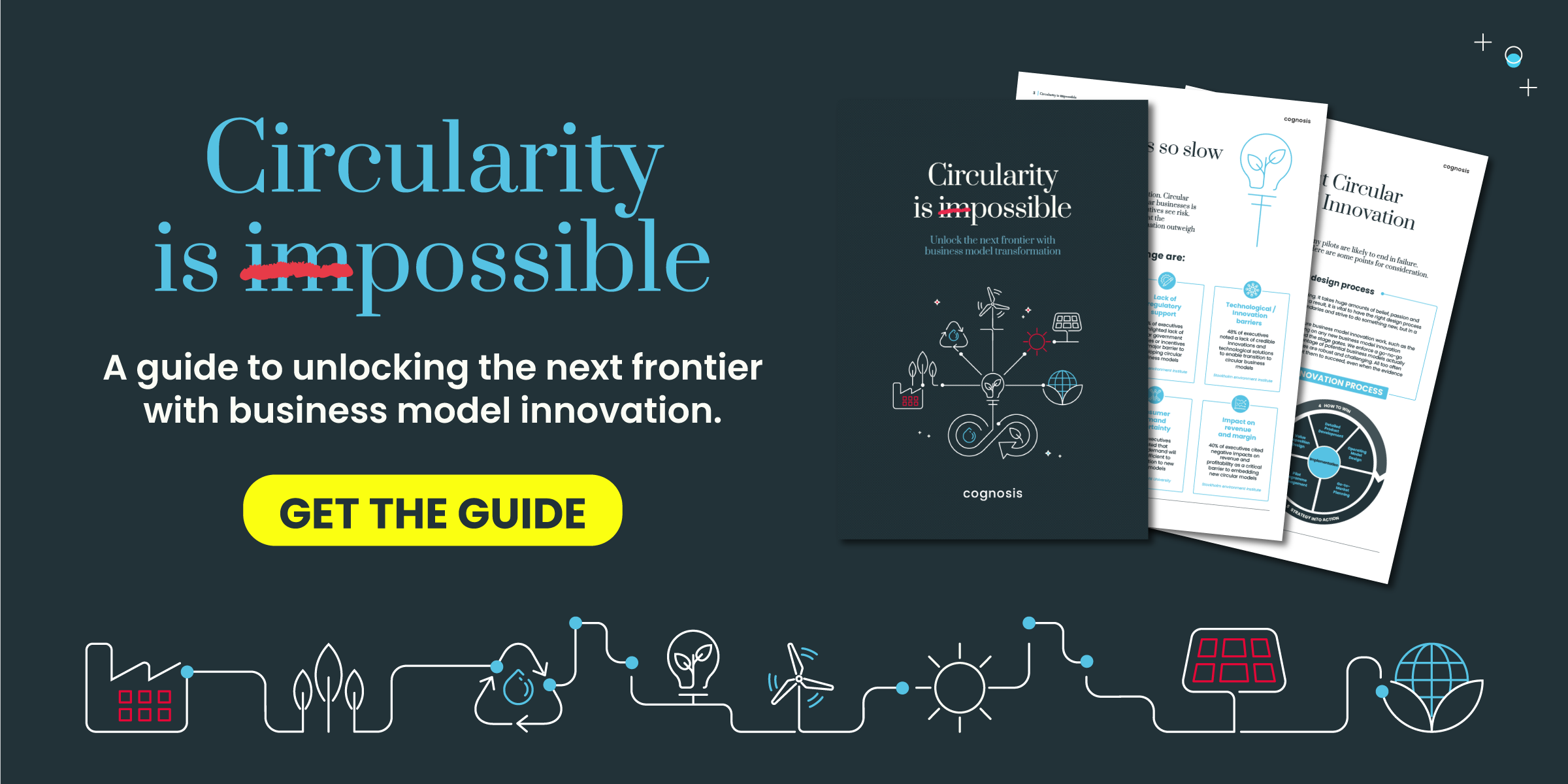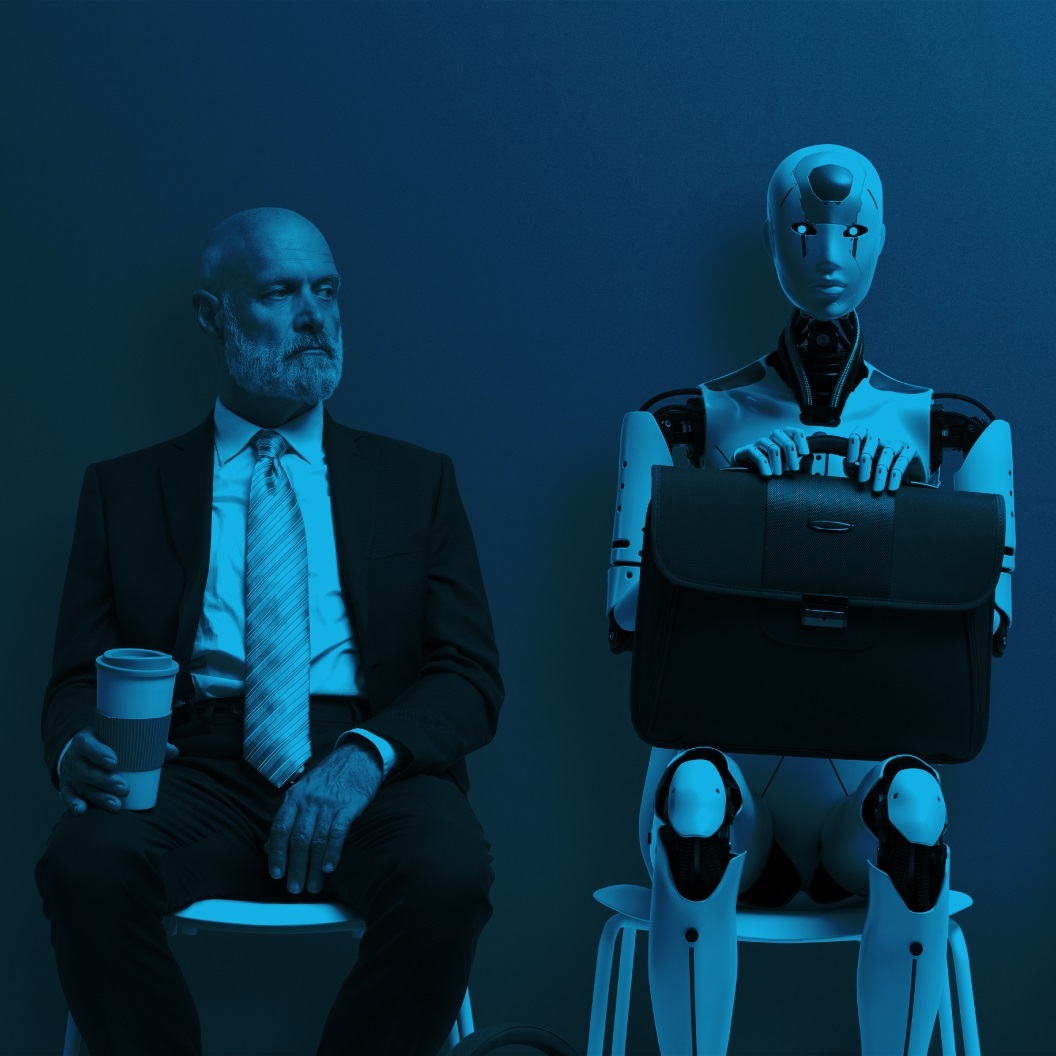5 Major blockers to break for circular business model innovation
While the environmental and commercial arguments for embracing circularity are well understood by business leaders, the appetite for new circular business models remains modest. In this article, we discuss 5 barriers and catalysts for circular invention.

There are several good reasons for business strategy leaders to board the circularity train. The first is existential. Humanity is currently using 1.7 times more resources per year than our planet’s ecosystems can regenerate. That overconsumption is a clear and present danger to communities, nature and businesses alike.
By applying circular economy principles to the way we produce and manage food resources; the world could cut greenhouse emissions by 49% by 2050. More than seven million new jobs could be created, unlocking up to $4.5 trillion in economic growth by 2030. As a centrifugal force in both the environment and world economy, business has the power to relieve the burden on future generations.
The second reason is just as compelling. Developing circular business models makes sense from a long-term commercial viewpoint. Indeed, 50% of executives expect circularity to become the ‘new normal’ for all in the next decade. A third expect industry to be disrupted by insurgent circularity start-ups.
> EXPERT GUIDE: Circularity is possible with business model innovation
Recognising the uncomfortable truth about circularity
The above figures also show that plenty of executives don’t share the same sense of urgency or excitement about circular business model innovation. The uncomfortable truth about circularity is that most established businesses were built for the traditional linear model of “take, make, dispose”. For larger businesses especially, deep-rooted change is hard.
More than hard, transforming business models can be downright terrifying. The notion of disrupting profitable, tried-and-tested linear business models can feel like harikari.
While the long-term benefits of circularity are attractive – both from a sustainability and profitability perspective – there’s no magic wand to make it happen.
What’s slowing down circular innovation in larger organisations?
1. High up-front costs
35% of executives cite capital expenditure as the biggest barrier to transitioning to circular business models. The timeline for ROI is another source of nervousness, with many boards stating that the benefits are often not presented clearly enough or will take too long to materialise.
2. Lack of regulatory support
42% of executives highlight a lack of clear government policies or incentives as a major barrier to developing circular business models. A stick and carrot intervention from government would help compel and encourage businesses to start innovating.
3. Technological / Innovation barriers
48% of executives note a lack of credible innovations and technological solutions to enable transition to circular business models. Business leaders are saying they just don't have the tools to back up their aspirations.
4. Consumer demand uncertainty
33% of executives suggest that consumer demand will not be sufficient to drive transition to new circular models. We can build circular systems, they say, but will consumers really change their behaviours? Will they actually demand these systems at a big enough scale to make it viable?
5. Impact on revenue and margin
40% of executives point to negative impacts on revenue and profitability as a critical barrier to embedding new circular models. The long-term value of circularity is not in question – the problem is generating the same margin as existing linear models.
Sources: British Business Bank, Stockholm Environment Institute, Deloite, Utracht University
Tipping the scales in favour of circular innovation
Despite these barriers to progress, there are still plenty of reasons to believe that circularity is accessible to traditional linear businesses.
For a start, the public is broadly in favour. Over 80% of consumers recognise that their choices and behaviours can have a positive impact on addressing global environmental challenges – and 59% are becoming more influenced by a product’s environmental impact when they make purchasing decisions. This positive intent comes with the caveat that behaviour change should be made as frictionless as possible.
On the technology front, AI for analysing big data and automating processes, Internet of Things (IoT) for real-time monitoring and blockchain for supply chain transparency are becoming more affordable. Cloud-based platforms enable sharing economies and interdependencies at a lower cost. Additionally, cloud providers are increasingly adopting renewable energy and energy-efficient data centres, reducing the environmental footprint of digital operations.
Government regulations, such as the EU’s Circular Economy Action Plan (part of the European Green Deal), the Inflation Reduction Act in the US and the Circular Economy Package in the UK, are putting circular practices into law.
Collaboration and partnership offer opportunities to share up-front costs, while acquisition of start-ups may prove a more cost-effective way to disrupt linear business models. Manageable changes to existing processes and infrastructure (i.e. low-hanging fruit) – rather than a major transformation – can kickstart the circular journey.
The wheels of change are already turning. According to Cognosis’ catalogue of circular business model innovations, both circular native start-ups and larger, traditionally linear companies are enjoying real traction with consumers. Our database of insights is designed to inspire new ideas and fuel business model decisions in the future.
Can business leaders afford to do nothing?
There are challenges – even dangers – with circular business model innovation. That’s true for any new value propositions. Apathy and inertia are common by-products of this anxiety.
However, those companies getting it right and placing themselves at forefront of change are already beginning to see the benefits for both their shareholders and the planet. They treat circular innovation as an investment in the future, rather than a short-term cost centre.
But if we accept that the transition circularity is both essential and inevitable, then ignoring the direction of travel could prove a much riskier decision.
> RELATED VIDEO: Industry leaders discuss how companies can start transforming and innovating their business models to thrive in a circular marketplace


